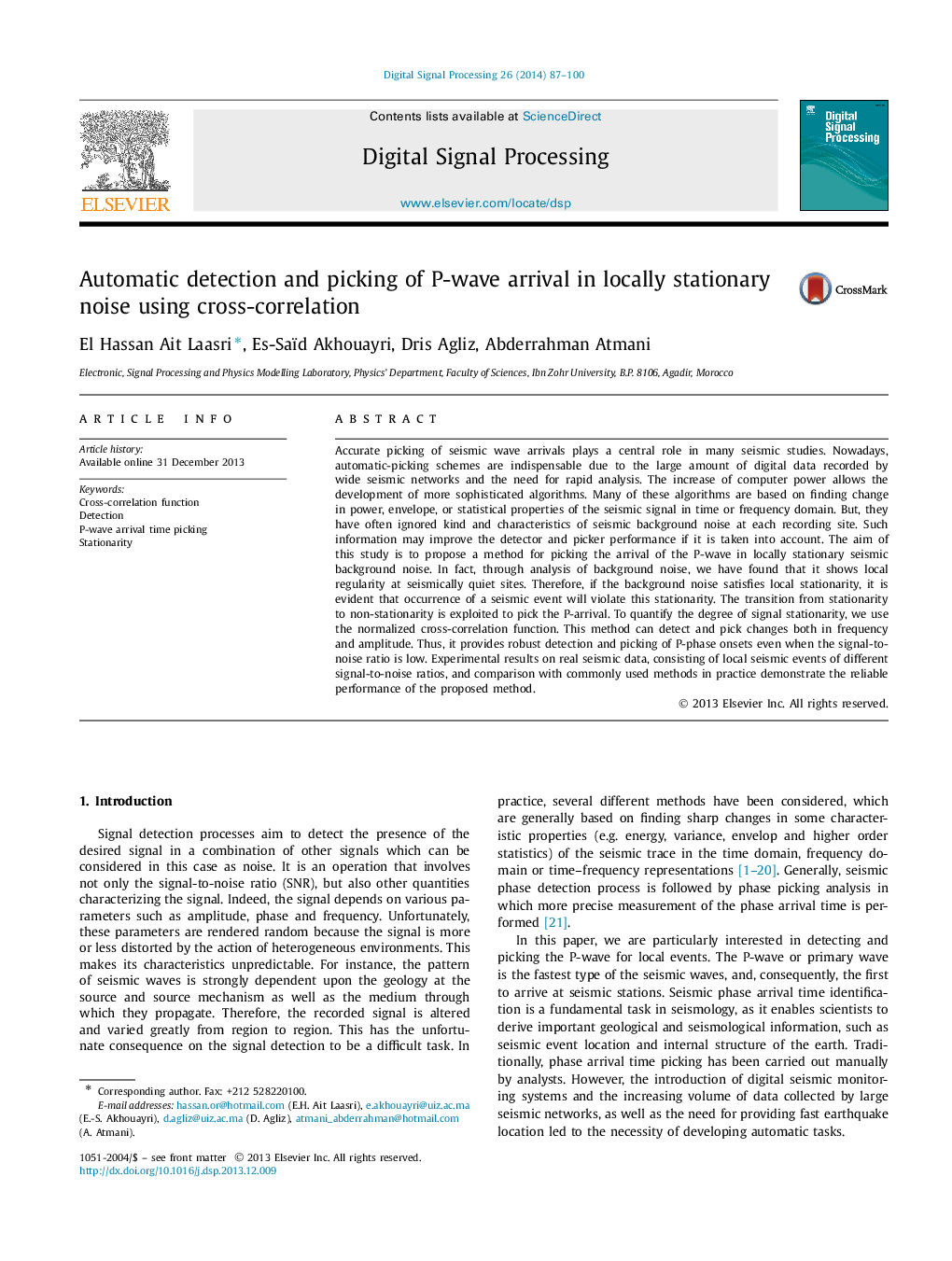| Article ID | Journal | Published Year | Pages | File Type |
|---|---|---|---|---|
| 559632 | Digital Signal Processing | 2014 | 14 Pages |
Accurate picking of seismic wave arrivals plays a central role in many seismic studies. Nowadays, automatic-picking schemes are indispensable due to the large amount of digital data recorded by wide seismic networks and the need for rapid analysis. The increase of computer power allows the development of more sophisticated algorithms. Many of these algorithms are based on finding change in power, envelope, or statistical properties of the seismic signal in time or frequency domain. But, they have often ignored kind and characteristics of seismic background noise at each recording site. Such information may improve the detector and picker performance if it is taken into account. The aim of this study is to propose a method for picking the arrival of the P-wave in locally stationary seismic background noise. In fact, through analysis of background noise, we have found that it shows local regularity at seismically quiet sites. Therefore, if the background noise satisfies local stationarity, it is evident that occurrence of a seismic event will violate this stationarity. The transition from stationarity to non-stationarity is exploited to pick the P-arrival. To quantify the degree of signal stationarity, we use the normalized cross-correlation function. This method can detect and pick changes both in frequency and amplitude. Thus, it provides robust detection and picking of P-phase onsets even when the signal-to-noise ratio is low. Experimental results on real seismic data, consisting of local seismic events of different signal-to-noise ratios, and comparison with commonly used methods in practice demonstrate the reliable performance of the proposed method.
